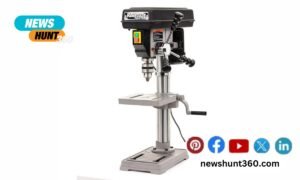The needs of upgrading the PC computer in offices usually come after years of usage following the downgrading performance. Installing new software becomes more difficult to perform. On the other hand, system updates usually come with the advancement that drains computer sources. You’d need to upgrade pc hardware to keep up with requirements. However, many people are confused about whether they should upgrade their PC or buy a new one.
Generally speaking, a PC for office usage requires reliable performance to support the working system and tasks. Upgrades are generally required by a PC to support working needs in the office. However, the manager/owner may also consider investing in a brand new PC for better performance. We’d straightforwardly provide you with when you need to upgrade your PC computer or buy a new one below.
When You Need An Upgrade
Most PC owners would consider upgrading their PC computer, especially the hardware after a while. Basically, they want to improve the performance of the computer or as they need more storage on their computer. Hardware upgrades are common and there are tons of products available in the market. What they need to do is to find compatible hardware parts for their computers and most importantly, to focus on answering your actual needs.
Need More RAM
One of the most obvious downgraded performances of a PC is when it shows delays and troubles when multitasking or opening new program tabs. You may also find hardships in accessing large files and moving around the system interface. Basically, you can upgrade your RAM by either replacing the old ones or adding new memory in the blank slots in your motherboard. Once you’ve added more RAM, you’d get a more responsive performance and shorter loading time of the page or program you’re opening.
Even though it’s actually easy to do this upgrade, a wrong choice or wrong installation could be disastrous. It should be noted that RAM comes in different types, versions, and capacity. Check whether your computer uses RAM DDR2, DDR3, or DDR4 as they can’t be used interchangeably and the store won’t accept your return for mistakenly buying the wrong type of RAM. They also come in Long DIMM or Short DIMM versions.
Your motherboard may have limitations on the maximum RAM capacity it can accommodate and different voltage. If your motherboard can only load 16GB of RAM, a pair of 32GB memory won’t work. At this point, you need to contact the manufacturer to confirm the maximum RAM capacity of your motherboard. Older memories may have a voltage of 1.5V while most modern ones come with 1.35V. You can use 1.35V memory on a 1.5V slot but you can’t use 1.5V memory on a 1.35V slot.
Despite the technical specification you want to consider above, you may have to consider the brands. There are many manufacturing brands producing RAM products. It’s great if you can find the one with a long warranty backup for your purchases. Some brands even offer one-on-one lifetime warranty over their products.
There are also chances where your RAM isn’t read or functioning. It could be because of the broken RAM or broken RAM slots. You can simply replace the RAM when it’s broken but when it comes to the damaged slots, you may have to buy a brand new mobo. You may consider consulting with high quality tech support NY for a RAM upgrade for sure. Alternatively, you can use a system scanner tool to figure out the compatible memory modules by yourself but a manufacturer’s confirmation would be better in our perspective.
Adding Graphic Cards
Another popular upgrade pc hardware is to upgrade the graphic performance of a PC by adding a dedicated graphics card. If the office PC is used for graphic processing like editing video or designing, the use of graphic cards is inevitable. Without a graphic card, your PC’s RAM would be forced to share its loads that lead to downgrading performance or even crashes
However, you’d need to find the compatible graphic cards supported by your PC’s motherboard. There are various graphic cards of diverse makes available in the market. Graphic cards also come in gigabyte unit capacity 2GB, 4GB, 8GB, and so forth. With a graphic card, you’d get better performance on your PC especially when catering to heavier graphical tasks.
Upgrading Hard Drive for More Storage
For office usages, upgrading storage hard drives is quite common but it’s actually more complicated than many people think due to the hardware changes and issues following. There are three major reasons why you need to upgrade your hard drive including:
More storage
Whenever you need more storage for your media files like photos, videos, or audio files, you may consider upgrading your hard disk to the one with a larger capacity. Today, it’s easy to find large storage drives with terabyte capacity in the market. However, it’s highly advisable to choose the capacity you actually need as the more you store, the longer the loading time when you access the file. Speed and accessibility are two issues when you expand storage with conventional/mechanical hard drives.
Faster Accessibility
If you demand a larger and/or faster storage drive, this could be the time for you to upgrade your storage drive with SSD. Solid State Drive(SSD) provides faster access to files and folders in your storage. SSD features more advanced technology that’s free from the use of mechanics and data fragmentation. Not only that SSD provides faster reading and writing performance, but this kind of storage drive is also more shockproof than HDD.
Whether it’s for replacement or expanding storage, SSD would be a valuable investment. Even though an SSD is generally more expensive than a traditional HDD, upgrading your office PC’s storage drive with a solid-state drive boosts working performance. Some manufacturers even provide a warranty that covers unit replacement and data recovery which are valuable features for office usage.
Bad Sectors or Downgrading Performance
Sometimes, upgrading storage drives could be inevitable especially when they show signs of downgrading performance. As it gets too slow to load files you may perform chkdsk procedure through command prompt and figure out whether there are bad sectors. If you find ones, that’s your red alert to immediately backup your files and upgrade to a brand new storage drive. In SSD, these bad sectors are known as bad blocks that even though rarer and possibly occur after years of usage
There are also more components you can upgrade like processors, power supply(PSU), motherboard, functional cards, and so forth. No matter what component you want to upgrade, you should ensure compatibility. If you’re not sure about it, you can contact an expert to help you with advice to upgrade your office PC.
When You Should Buy A New Office PC
As you’ve seen above, there is a range of components you can replace or upgrade for an office PC. However, a thorough upgrade pc hardware could be costly, and buying a new PC would be considered at some points. These are when you should buy a new PC:
Upgrading is No Longer Feasible
When upgrading costs more than buying a new PC unit, then you may consider investing in a new PC. If you do a comprehensive upgrade, the total cost could be high. On the other hand, some components like motherboards or processors, are simply not feasible for replacements as they may take more than half of the total cost. At this point, a new PC with higher specifications could be cheaper or more feasible to invest in than upgrading the existing unit.
PC is too Old
An upgrade investment could be more costly if the PC unit is too old, let’s say more than 10 years old. There are chances that you’d have to upgrade or replace other components anytime soon after done with one. Upgrading your PC becomes an unfeasible investment in the long run when it’s already too old. At this point, you may consider investing in a brand new PC instead.
Upgrading doesn’t Help
You’d likely have to buy a new PC as upgrades don’t deliver the expected performance or still not answer your working needs in your office. If you’ve upgraded RAM and/or storage drive but the problems still occur or it doesn’t satisfy you, don’t go upgrading any further. Save your budget for a new desktop computer instead.
No Compatible Components for Replacement
Some brands may no longer manufacture components for their older products that leave you no option except to shut down your old computers. Even if some stores have stocks, they could be pricey and/or no longer have a warranty for your purchase. For example, today’s computer stores no longer sell DDR1 RAM or ATA HDD. When you can’t find older components for the replacement of your computer, it’s time to buy a new PC instead.



